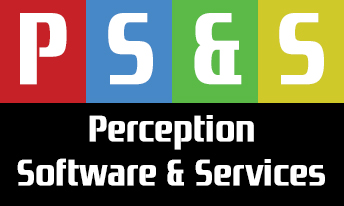
The Engineering Network’s journey is typical of many independent B2B publishers. Having acquired MachineBuilding.net, a thirteen year old web-only property, the company launched in June 2020. At the helm was Luke Webster, someone with twenty years’ experience of publishing with Wilmington, Findlay Publications and Mark Allen Group and Mark Newby, whose B2B career started in the early eighties with IML Group.
What they had was an established but in-need-of-attention brand and loads of drive; what they lacked was any technical know-how.
“My biggest fear at the beginning,” said Luke, “was going up against large competitors with big in-house IT teams. It was a daunting prospect.”
His core belief was that if you can get the data right, you can build a successful business off the back of it, but his own background was in sales not tech.
What they started with

In June 2020, MachineBuilding.net was a site with lots of good content, but with the user-experience, joked Luke, of a site designed in the fifties. Not being mobile optimised was just one of its many drawbacks. The publishing process was achingly slow, with virtually no automation, and the website, built on a tech platform that had seen no development since the site first launched, had to be “rebuilt” every night. Ad sales, the brand’s main source of revenue was managed via spreadsheets and Microsoft Word, with no transparency, shared information, order history, codification or call notes – again a situation familiar to many small publishers. The circulation of the site’s newsletter was a list of solitary email addresses.
It all worked, after a fashion, but everything took ages to do and nothing was integrated, so it was impossible to get a good grasp on any of the key pillars of the business: content, advertising or audience. Everything was labour intensive and siloed.
What they needed
Finding a solution to the tech challenges they faced was Luke’s top priority. He wanted a single integrated platform that could manage content, sales and audience. It needed to be a system used by other B2B publishers like him, so he could benefit from their needs and requirements being met. He wanted to deal with a single supplier who would understand his business and who could act as an extension of his team – a supplier with experience and expertise that he could delegate the tech side of major new projects (launching new sites, onboarding new acquisitions) as well as the day to day running of the circulation.
For Luke, having everything integrated was absolutely fundamental: “you can’t have one without the other. All parts of the publishing process must be linked.”
The new platform had to have extensive functionality, yet not be overly complicated, designed to facilitate the quick and efficient publishing of content to a device-responsive website. The platform needed to link that content both to the ad sales system so sales teams could see at a glance how well their clients’ campaigns were doing and to the audience database so that detailed profiles of readers could be built up to allow full analysis of exactly who the audience is and what they are doing on the site.
Luke also wanted a platform that could grow as they grew, so when the time was right to launch spin-off revenue streams, like events and awards, the platform could handle it.
It had to be integrated, full of time saving functionality, easy to use, have the needs of B2B publishers front and centre and have the flexibility to adapt to their future needs. In short, says Luke, “we wanted an all singing, all dancing system”, but… it had to be affordable.
So, armed with his wish list, Luke went in search of a suitable supplier.
To cut a long story short, he chose Perception SaS, the Sussex based company headed up by Andy Kirk, that provides integrated publishing solutions, specialising in the B2B market.
Talking the same language
Apart from the important matter of ticking the functionality boxes, Andy Kirk’s pitch for the business was “refreshing” said Luke; “he understood what we wanted to do. He spoke in plain language and asked the right questions. He quickly understood what our business needed now and what it might need further down the road.”

Andy Kirk says that Perception prides itself on offering “big publisher functionality at small publisher budgets” and that all their software has been built around the needs of independent B2B publishers. All Perception clients use the same core package and enhancements made for one are rolled out to the others, so all users benefit from the experience of fellow users of the system.
Perception offers software solutions for managing content, advertising and audience, each of which can be deployed singly or, for best results, integrated. The audience management software can be run in-house or, as is the case with The Engineering Network, run as a bureau service.
Perception’s growing roster of B2B clients include Automotive Media & Events, Office Solutions and Stable Publishing.
Perhaps the most important thing for Luke was that he sees Andy and Perception as part of his team. Speaking in early September, having been in business just over a year and having just acquired Industrial Technology magazine, he said that “we would not be where we are today without Andy as part of our team”.
What’s happened since
Despite launching three months into the Covid pandemic, it’s been a first year of growth for The Engineering Network. MachineBuilding.net went live on the Perception platform last September, its newsletter circulation has doubled with the previously simple email addresses now being supplemented with growing amounts of valuable profile data. A spin-off site (FasteningandBonding.net) was launched this September, with Perception getting everything set up within nine days.
Datagates have been added to what were previously ungated sponsored PDF guides, allowing the publishers to charge a premium for the sponsorship packages, because they can now provide clients with details of who has downloaded the guides.
Luke’s sales teams can now engage more fully with advertising clients using Perception’s article tracking feature that tells clients how many views their ads and articles have had and who had viewed them. Gone are the multiple spreadsheets and working in the dark. Luke can easily find clients on the system, see all activity and call notes as well as seeing, at a glance, what his reps are up to.
None of this is rocket science, as Luke says, but if your current systems haven’t been designed as an integrated platform, with the accumulated experience of decades of publisher activity already plumbed in, then you have three choices: soldier on with what you’ve got, redevelop or replace. For independent publishers, the most cost-effective solution is often to replace.
Secrets of B2B success
Having worked in B2B publishing for twenty years, what, I asked Luke, had changed and what was the secret of success. The fundamentals of good content and good data remained constant, he answered, but publishers had to be always thinking of new ways of doing things: “if you’re not moving forward, you’re moving back”.
The building blocks for successful B2B publishing are, according to Luke, developing close relationships with customers, focusing on your strengths and constantly innovating, but always with a clear-eyed focus on delivering value.
Each new innovation needs to be judged on the value to the end customer. If it doesn’t measure up, then don’t do it, because … “what’s the point?”
And that last point illustrates why he is so focused on data. Without the data to inform the decision making process, publishers are working blind, with little more than gut feel to rely on.
Where next for The Engineering Network?

Luke is keen to grow the business further and is not ruling out further acquisitions, however he sees his primary focus over the next twelve months as bedding in and investing in what they’ve built and bought in their first year, to develop and deepen the foundations of the business.
Its recent acquisition, Industrial Technology, is a long-established print magazine with a fairly basic web offering. Much of the focus will be on developing its website and newsletter, and applying the learnings of their experience with the Perception platform to their new title.
Where next for Perception?
Perception too is looking to grow. From a platform perspective, in response to demand from their existing clients, they are currently adding awards and events functionality to the platform and Andy expects to have this rolled out to all their clients in Q4 this year.
And, of course, they are looking to expand further their B2B client list, having won a number of new clients over the past year or so, including The Engineering Network, Western Business Media and MIT Publishing.
“If you’re an independent B2B publisher, struggling with aging systems, where everything is taking you way too long and you sometimes feel like your left hand doesn't know what your right hand is doing, and that your lack of tech capability is holding you back, then give me a call,” says Andy Kirk; “Transitioning to our platform is a lot easier than you might think and something we’ve managed successfully many times before.”

Perception SaS
Andy Kirk, Managing Director
Tel: 01825 701 520
Email: andy@perception-sas.com
Website: www.perception-sas.com










